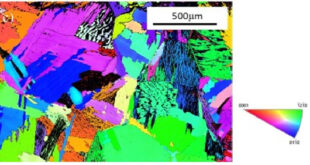C.H. Chen, M.Y. Tsai
Microelectronics Reliability, Volume 52, Issue 5, May 2012
Abstract
The strength of high-power light emitting diode (LED) dies, cut from wafers with a laser, has to be determined for the need of design and quality control in order to assure the good reliability of packages in manufacturing and service. The objective of this study is to determine the strength of high-power LED die with a size of 1 × 1 × 0.1 mm3 by point-load test (PLT) and line-load test (LLT) associated with a plate-on-elastic-foundation configuration. ANSYS (one of commercial finite element codes) analysis is used to calculate the stress distributions of the die under both PLT and LLT. The ANSYS models of the PLT and LLT are validated by comparing with experimental force–displacement curves, and the results are further used to convert the die failure force from the tests into the die strength. The mechanism of tensile-stress dominated die strength has been discussed and validated in detail via these test results and analyses. The results of the PLT and LLT also indicate that for the die failure on chip surface, the average die strengths are about 1.44 GPa and 1.52 GPa from the PLTs with two different-radius pins, and about 1.2 GPa from the LLT. On the other hand, for failures on sapphire surface, the average die strengths are reasonably about 1.49 GPa and 1.26 GPa from the two PLTs, but the average one from the LLT is about 0.64 GPa (with less than 50% of the values from the PLT). The inconsistent data between two PLT and LLT for failure on sapphire surfaces were found to result from the edge chipping of the die specimen observed by scanning electron microscopy. It was also observed that the thin-layer GaN material has to be taken into account in the ANSYS analyses with a bi-material model of the LED die for precisely determining the die strength for failure on the chip surface. Otherwise, these strength data would be overestimated by a few tens of percent with a uni-material model of the LED die. All in all, this study has successfully demonstrated that the LED die strength can be determined by these feasible, easy-to-use and reliable test methods.

Go to Journal
 Advances in Engineering Advances in Engineering features breaking research judged by Advances in Engineering advisory team to be of key importance in the Engineering field. Papers are selected from over 10,000 published each week from most peer reviewed journals.
Advances in Engineering Advances in Engineering features breaking research judged by Advances in Engineering advisory team to be of key importance in the Engineering field. Papers are selected from over 10,000 published each week from most peer reviewed journals.

